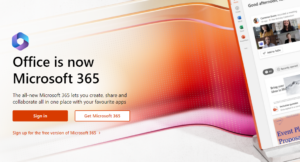If you have previously logged into Office 365 accounts for different business or school tenants, they may remain even when you sign out of those accounts. This is how to remove old school or work OneDrive accounts from File Explorer in Windows.
1. Exit OneDrive by right clicking on the OneDrive system tray icon > Close OneDrive.
2. Open the Registry Editor by clicking the Windows + R button and enter regedit, OK.
3. Navigate to HKEY_CURRENT_USER > Software > Microsoft > OneDrive > Accounts > BusinessName.
4. There may be a number of Business or School accounts depending on how many you have logged into previously. Find the specific one by looking at the UserEmail value. After you found the correct one, delete the entire folder containing that key.
5. Navigate to HKEY_CLASSES_ROOT > CLSID. Inside the folder, search (CTRL + F) for keyword: OneDrive.
6. Find next until you find one that has the OneDrive – Company name as the Default value and looks something like the screenshot below:

7. Modify the System.IsPinnedToNameSpaceTree value to 0 > OK.
If the icon is still visible, restart your computer.
We hope this helps!




Thank you this Removed old OneDrive files from explorer for (1) old School account and (2) an old business account on Windows 10 Professional.
Pingback:How To Remove Onedrive From Windows 10 File Explorer - Geeky Radar
Pingback:remove onedrive account from pc relevance - infose.xyz
Find this: Computer\HKEY_CURRENT_USER\Software\Microsoft\Windows\CurrentVersion\Explorer\Desktop\NameSpace\ (serach for the onedrive folder name you want to remove and delete it!)
Thanks Kenneth, your fixed worked for us!!!
Thanks Kenneth, your fix worked instantly!
The original post did not help me. My old college files all remained and Windows 11 settings did not help. BUT the comment Kenneth left about using Computer\HKEY_CURRENT_USER\Software\Microsoft\Windows\CurrentVersion\Explorer\Desktop\NameSpace\ in the address bar was what I needed!